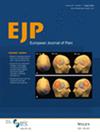Pain, Stress and Mental Well-Being Over Three Generations
Abstract
Background
The multifactorial nature of chronic pain should be reflected in pain assessment. The aim of this observational study comparing samples from three generations assessed at different times was to present differences in pain, stress and mental well-being.
Methods
Pain sites, widespread pain, stress (Perceived Stress Scale-4) and mental well-being (30-item General Health Questionnaire) were described across generations from the Malmö neck and shoulder study (parents, Generation 1, n = 12,607), Malmö offspring study, and Malmö Offspring pain study (children and grandchildren, Generation 2, n = 1572; Generation 3, n = 936).
Results
Pain prevalence remained comparable across generations. In all generations, women reported more pain sites compared to men, mean difference 1.0 (95% CI 0.9–1.1) in Generation 1, mean difference 1.3 (95% CI 1.0–1.6) in Generation 2, and mean difference 0.9 (95% CI 0.5–1.3) in Generation 3. The frequency of widespread pain for women and men was 28% and 16% in Generation 1, 27% and 12% in Generation 2, and 22% and 15% in Generation 3, respectively. Perceived stress levels were consistently higher in Generation 2 and 3 compared to Generation 1 for both women and men. Among women, mental well-being remained stable between Generation 1 and 2 but declined significantly in Generation 3 (mean difference 3.2, 95% CI 2.4–4.3).
Conclusions
The results suggest significant gender disparities, with women consistently reporting more pain sites, higher stress levels, and reduced mental well-being compared to men. Furthermore, the findings suggest that generational differences in coping—or other factors—may mitigate the impact of psychosocial distress on pain prevalence, warranting further research.
Significance
This study highlights the comparability of pain prevalence across generations despite increasing stress and declining mental well-being, particularly in women. These findings emphasise the importance of integrating mental health support and gender-specific coping strategies into pain management, offering insights into biopsychosocial mechanisms underlying the interactions between pain and perceived stress.


 求助内容:
求助内容: 应助结果提醒方式:
应助结果提醒方式:


